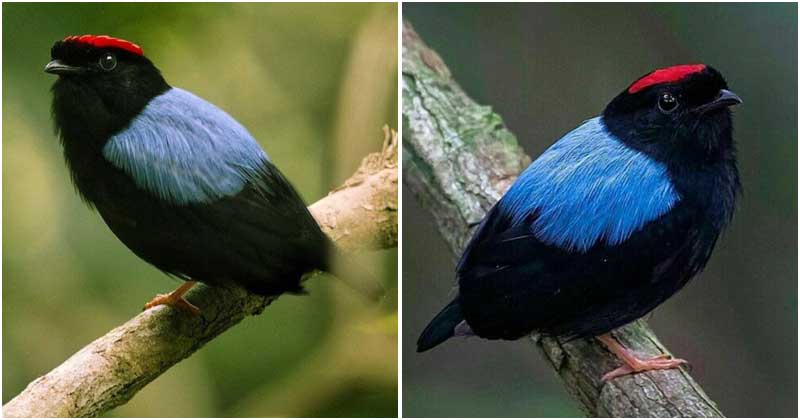There are many spectacular passerine birds in nature. They are gifted one-of-their-kind coats, helping them win the spotlight whenever they appear. Multiple hues splash on their plumage but they blend harmoniously and beautifully. They are too perfect to be true!

The blue-backed manakin is one of these captivating birds. This species seems to jump out from fairy books with a gorgeous red crown and brilliant blue cape. These colors shine brightly over the mid-night black suit, making this bird conspicuous wherever it comes.

You can watch the video of this stunning bird below!
The male and female of this passerine look different. While the male has striking plumage, the female is duller with olive-green on her upperparts and a pale olive below. Young male birds also have red caps and but their blue back shows when they grow older.

The blue-backed manakin is a forest-dwelling bird. It distributes widely, from Colombia and Tobago to southeastern Brazil in other countries such as Venezuela, the Guyanas, Bolivia, Ecuador, Peru, as well as Tobago.

They prefer living in humid forests and secondary growth woodland and breed in tropical South America. In lowlands, these small birds are found at an altitude of 500 meters up to 700 meters.

Regarding the diets, this species feeds both on fruit and insects. They love eating insects during the breeding season as these are a good source of protein.

When the breeding season begins, the male blue-backed Manakin performs a dance to attract the female. After finding mates, female birds use twigs to build their nests in chosen trees. They then lay 2 eggs in their nests and incubate them. She continues to feed the hatchlings until fully-fledged, for around 20 days. Male birds don’t join their mates in these works.

H/T: One Big Birdcage

